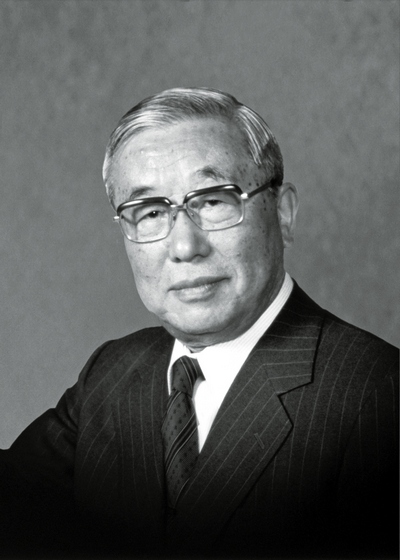Eiji Toyoda (Eiji Toyoda)

Toyoda studied mechanical engineering at Tokyo Imperial University from 1933 to 1936. During this time his cousin Kiichiro established an automobile plant at the Toyoda Automatic Loom Works in the city of Nagoya in central Japan. Toyoda joined his cousin in the plant at the conclusion of his degree and throughout their lives they shared a deep friendship. In 1938, Kiichiro asked Eiji to oversee construction of a newer factory about 32 km east of Nagoya on the site of a red pine forest in the town of Koromo, later renamed Toyota City. Known as the Honsha (“headquarters”) plant, to this day it is considered the “mother factory” for Toyota Motor production facilities worldwide.
Toyoda visited Ford’s River Rouge Plant at Dearborn, Michigan during the early 1950s. He was awed by the scale of the facility but dismissive of what he saw as its inefficiencies. Toyota Motor had been in the business of manufacturing cars for 13 years at this stage, and had produced just over 2,500 automobiles. The Ford plant in contrast manufactured 8,000 vehicles a day. Due to this experience, Toyoda decided to adopt US automobile mass production methods but with a qualitative twist. Toyoda collaborated with Taiichi Ohno, a veteran loom machinist, to develop core concepts of what later became known as the ‘Toyota Way’, such as the Kanban system of labeling parts used on assembly lines, which was an early precursor to bar codes. They also fine-tuned the concept of Kaizen, a process of incremental but constant improvements designed to cut production and labor costs while boosting overall quality.
As a managing director of Toyota Motor, Toyoda failed in his first attempt to crack the U.S. market with the underpowered Toyota Crown sedan in the 1950s, but he succeeded with the Toyota Corolla compact in 1968, a year after taking over as president of the company. During the car’s development phase, Toyoda, as executive vice-president, had to overcome the objections of then-president Fukio Nakagawa to install a newly developed 1.0-liter engine, air conditioning and automatic transmissions in the Corolla. Appointed the fifth president of Toyota Motor, Toyoda went on to become the company’s longest serving chief executive thus far. In 1981, he stepped down as president and assumed the title of chairman. He was succeeded as president by Shoichiro Toyoda. In 1983, as chairman, Eiji decided to compete in the luxury car market, which culminated in the 1989 introduction of Lexus. Toyoda stepped down as chairman of Toyota in 1994 at the age of 81.
In his later years, Toyoda was hospitalised for hip problems, and was wheelchair-bound for a time, yet remained affable and smiling in interviews. Retaining a clear mind into his 90s, he enjoyed tackling sudoku puzzles. He spent most of his last years undergoing treatment at the Toyota Memorial Hospital in Toyota City, Japan, close to company headquarters. Five days after his 100th birthday, Toyoda died of heart failure in the Toyota Memorial Hospital on 17 September 2013. Paying tribute to Toyoda, David Cole, former chairman of the Center for Automotive Research, said “He was a real visionary and inspirational leader who understood what it would take to make Toyota a successful company.” Leslie Kendall, curator of the Petersen Automotive Museum, described Toyoda as the Japanese equivalent of Henry Ford.
Born
- September, 12, 1913
- Nagoya, Japan
Died
- September, 17, 2013
- Toyota, Aichi



